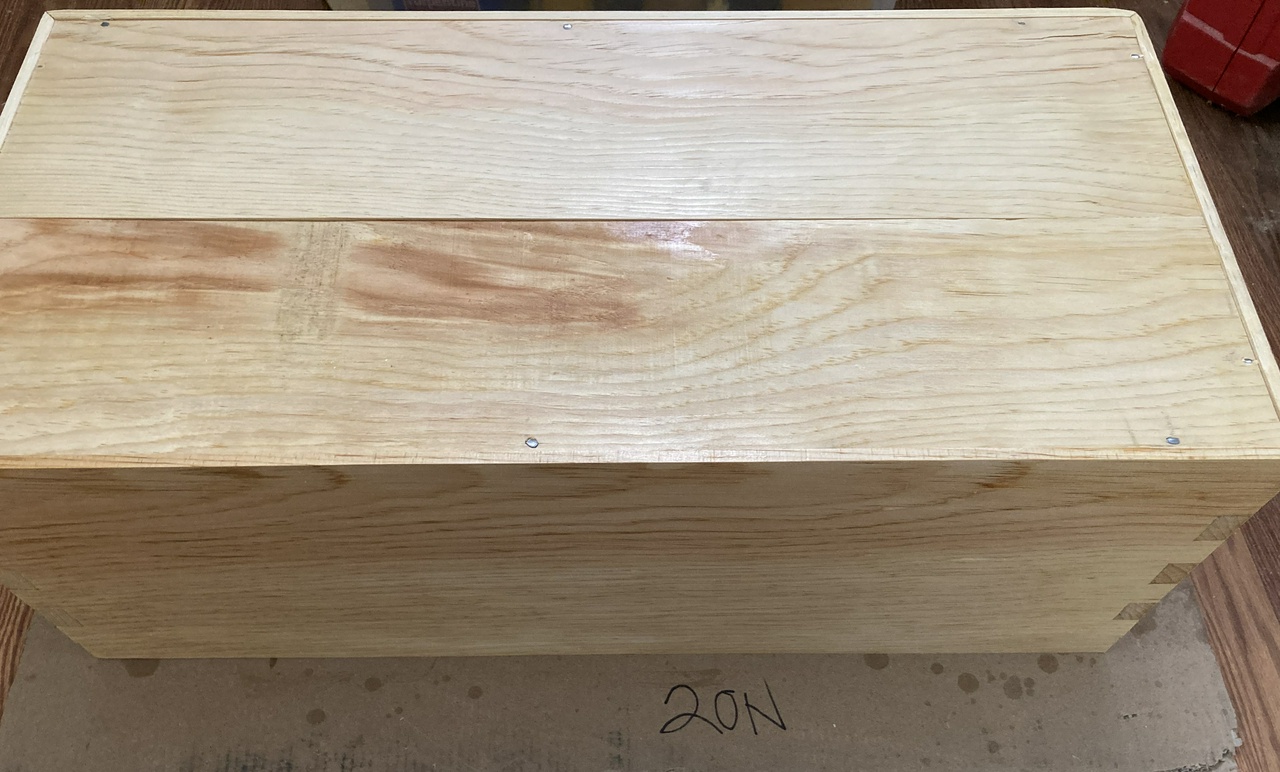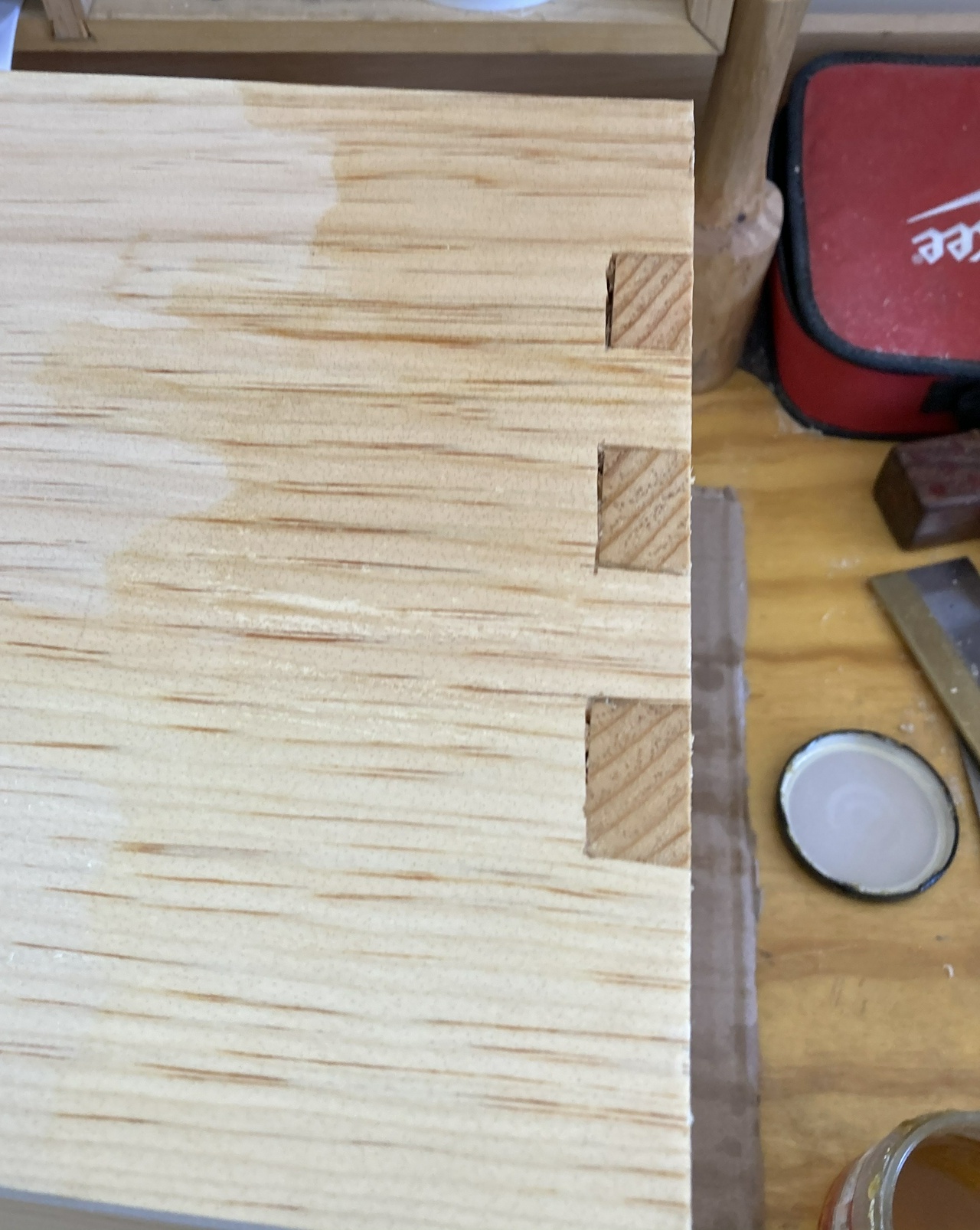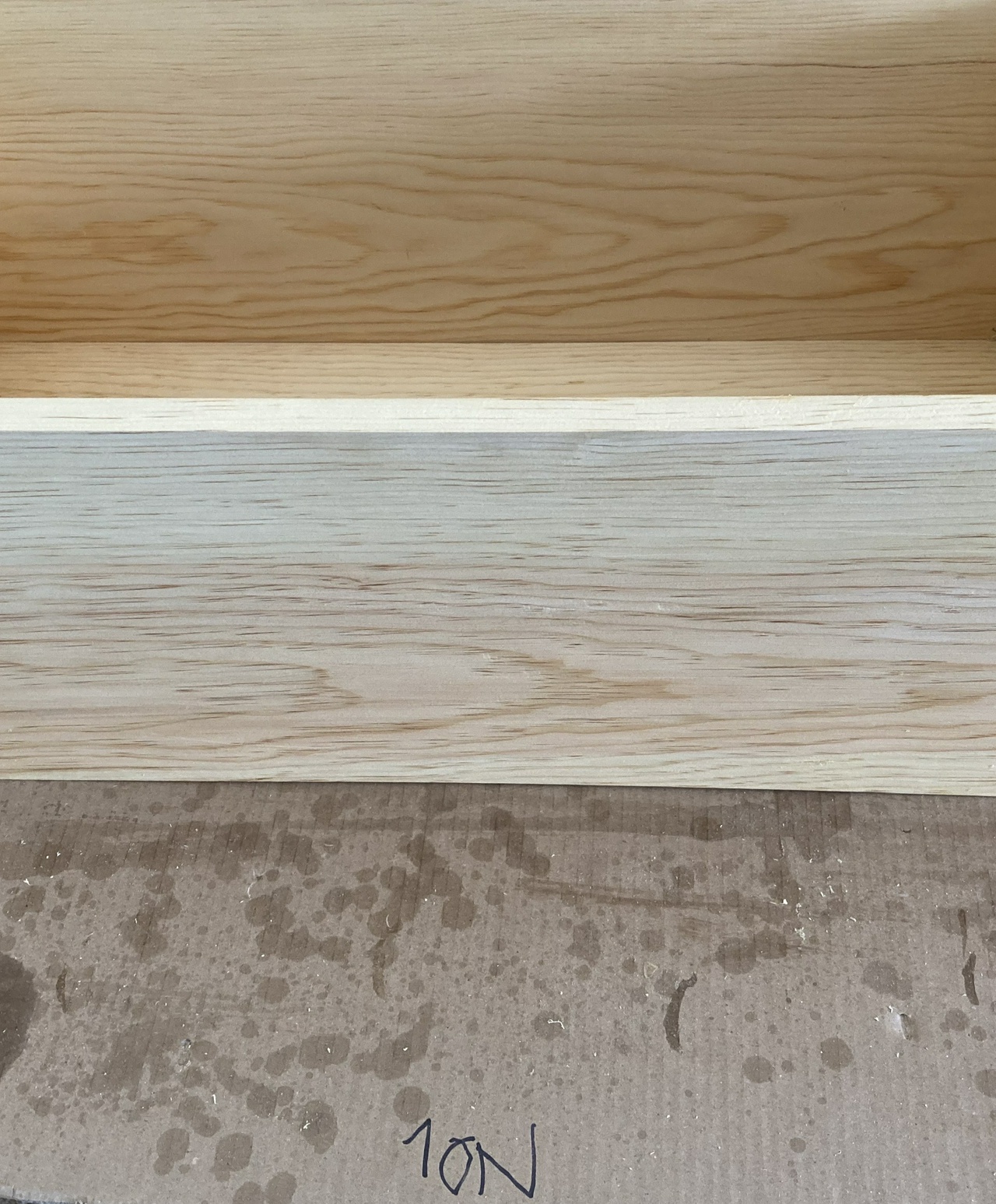Playing with Kakishibu
A while ago I read about kakishibu, a traditional Japanese finish mostly used on softwoods.
Since the one English-language book on kakishibu is out of print, and the author doesn't have any more copies, I decided to order a bit of the fermented persimmon juice and see what I could see.
I had a small box I had built to hold some clamps. The box was made with poplar sides and a birch top, and the poplar had an unappealing shade of green that I wanted to modify. I left the bottom of the box untreated, so I could look back to compare that with the sides that I treated.

Immediately after painting the box with a layer of the kakishibu, I noticed two things. One was that the reddish tint did a great job of modifying the greenish cast. I like it! The other thing is that, being water-based, it raised the grain of the box.

So I sanded the box lightly with 400 grit sandpaper, then applied another coat of the kakishibu, and set the box outside in the New Mexico sun for a couple mornings while I worked on other things in the shop.

That was quite a difference! They say that kakishibu will continue to darken for a month, but after just two mornings (about 6 hours) it looks a lot more appealing than the plain poplar (scroll back to that first image...)

And after two more mornings of sunshine, the color of the box has darkened a bit more, but it seems to be slowing down. I'll keep an eye on it for a couple more weeks, and maybe add another photo, but I'm sold on kakishibu, at least for covering up the green that poplar shows. And it looks pretty good on the birch top of the box, as well.
#woodworking #finishing #technique
Discuss... Reply to this in the fediverse: @davepolaschek@writing.exchange




















